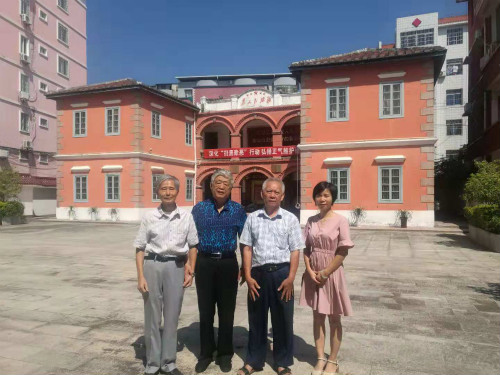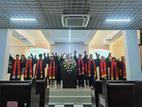On May 15, 2020, the government officially returned the Red Mansion which was on the north side of the Puyi Church in Zhangpu. Since then, Puyi Christian Church has taken advantage of the pandemic period to renovate the building, which will be used as an office for the church in the future.
The Red Mansion was built in 1920 and has a hundred years of history. There is a touching story of the connection between Miss G. J. Maclagan and the Red Mansion. Miss Maclagan was a single female missionary, sent by the British Presbyterian Church to China in 1882. She came to Zhangpu County, Fujian Province with another missionary, Sister Miss Johnston.
At that time it was a common occurrence in Zhangpu that babies would be drowned. “Sometimes, these babies were rescued by Christian neighbors and given to families willing to take care of them, otherwise the baby girl would be sold... At that time, there were only eight or nine ladies who were literate, and it was almost impossible for females to attend school. What’s more, not many people were available to insist on allowing more persons to attend school. " After learning about the situation, Maclagan established an "Enlightenment Hall" in the Christian Church of Xinluwei, Zhangpu County, which attracted girls aged from 4 to 6 and school-age orphan girls.
.jpg)
A map of Changpu Missionary Compound/Provided by Zheng Meizhen
At that time, the girls in the "Enlightenment Hall" were "living in the house near the (now Puyi Christian Church) Chapel compound, and the widows of Christians took care of these children like mothers.
On February 6, 1892, after the Enlightenment Hall was established, Ms. Maclagan founded Zhangpu’s first women’s boarding school and day school—Yangzheng Girls’ School. There were only 25 students at the beginning. But by the first semester of 1893, the girls’ school had 60 students, and the school building was expanded." After that, more than 600 students graduated from school. Many of them could read and write Roman letters and Chinese, learned skills in textiles, shoemaking, sewing, and embroidery, and also gained some Bible knowledge. Some of those who completed their education became teachers."
At that time, every church in Zhangpu had some people who could read and were interested in serving. By 1908, the school had held six lunch-classes with a total of 54 students. "This was a school, especially for young children. They were busy cutting grass for fuel and taking water buffalo out to eat grass. Then they were together during the lunch break to learn and read the Bible and simple Roman letters, and repeatedly sang hymns." This promoted the rapid spread of Christianity in the Zhangpu area.
In 1904 the "Yangzheng Girls' School" was renamed "Zhangpu Private Fengyuan Primary School" (the predecessor of Zhangpu Experimental Primary School). Before liberation, the facilities and teachers of Fengyuan Primary School were the best in Zhangpu County and the teaching quality was quite good. Many students who were educated at this school later became celebrities in the political world.
In 1920, the alumni who graduated from this school and the British Presbyterian Church jointly funded a two-story building of red brick and wood of nearly 600 square meters on the north side of Puyi Christian Church in Zhangpu County. This was a Chinese-Western style building that was used as a classroom for students (commonly known as the Red Mansion). Missionary Maclagan worked in Zhangpu for nearly 40 years and never married. She returned to the United Kingdom in 1931 and passed away on May 14, 1939, at the age of 83.
After liberation, the Puyi Church was nationalized, and after the reform and opening-up policy, it was returned to the church. In 2007 the government allocated funds to repair it, and it became the Zhangpu County Revolutionary History Memorial Hall. In April 1984, it was designated by the government as a Cultural Relics Protection Unit. And in June 2011, it was declared to be the Party History Education Base of Fujian Province by the Party History Research Office of Fujian Provincial Party Committee. On January 28, 2013, it came under the Provincial Cultural Relics Protection Units by the Fujian Provincial People's Government.
- Translated by Elaina Wu












